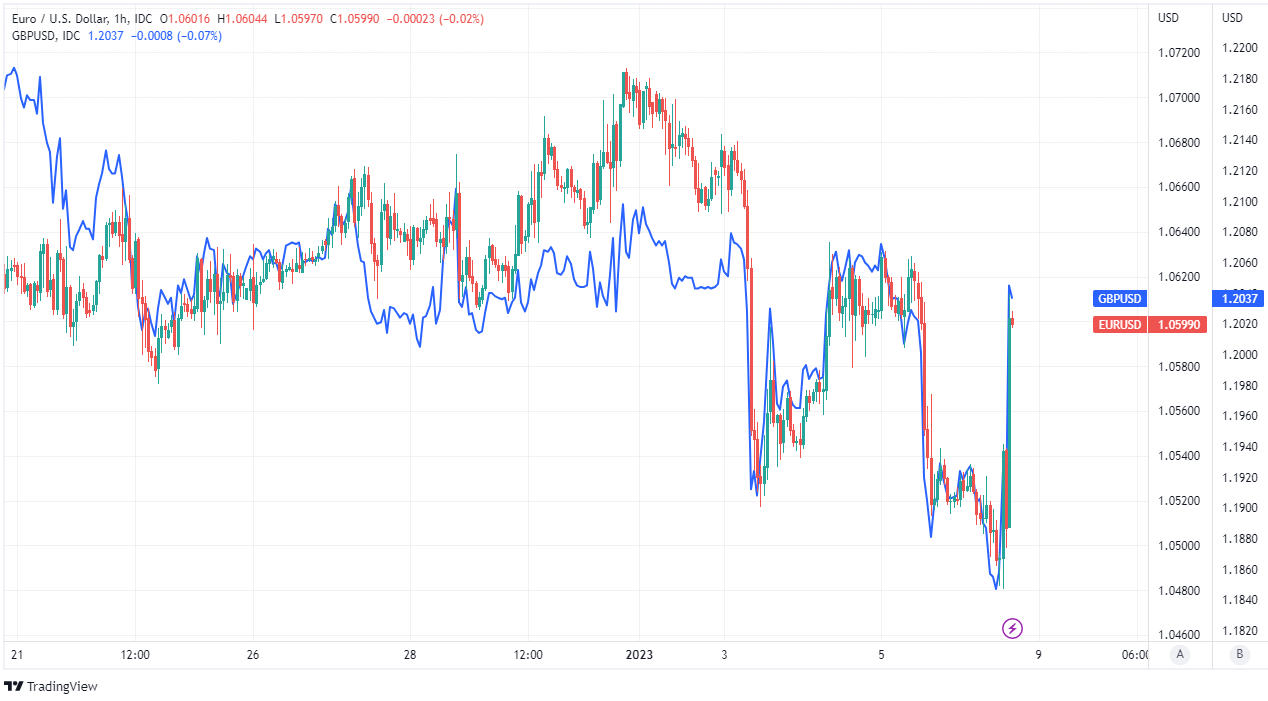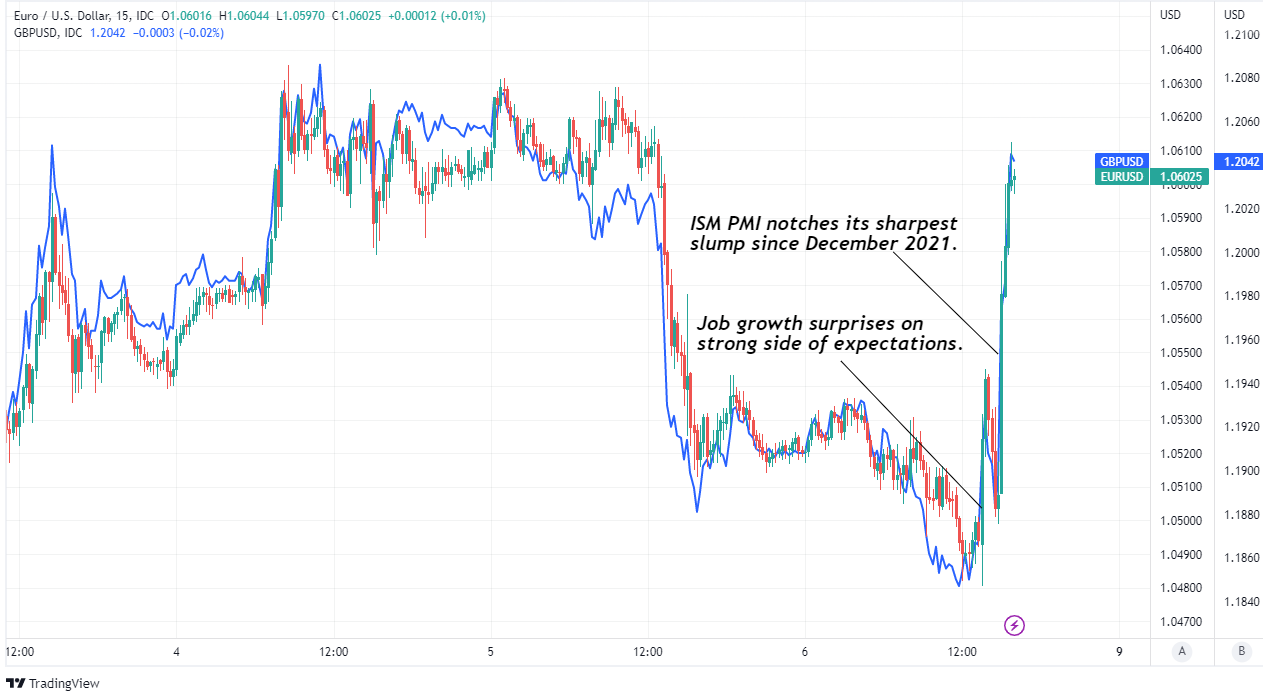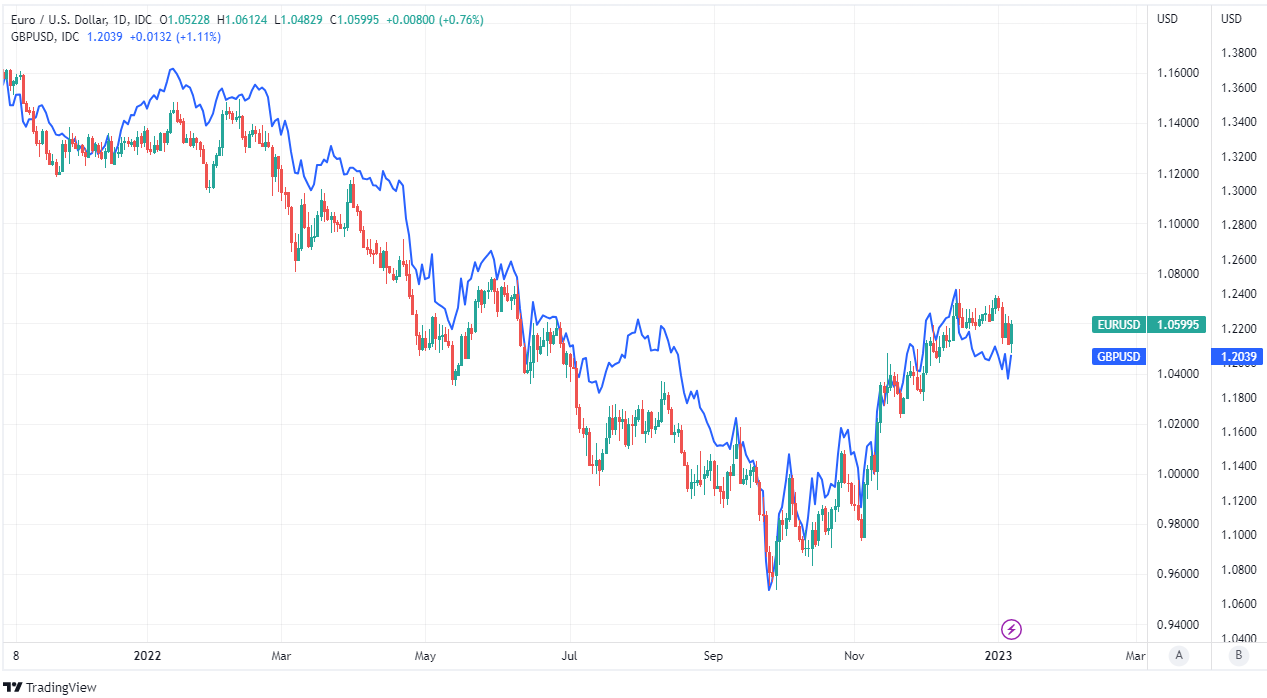EUR/USD Climbs after Mixed Bag of U.S. Data Turns USD Lower
- Written by: James Skinner
"The headline number is startling and a repeat performance in January should set alarm bells ringing" - Pantheon Macroeconomics.

Image © European Union - European Parliament, Reproduced Under CC Licensing.
The Euro to Dollar exchange rate climbed sharply to recover the 1.06 level ahead of the weekend following a mixed bag of U.S. economic figures including another bumper non-farm payrolls report that was followed by a significant slide in an important indicator of activity in the services sector.
Europe's single currency had been probing below 1.05 against the Dollar on Friday before the Bureau of Labor Statistics reported a larger-than-expected increase in employment that pushed the unemployment rate back down to the all-time low of 3.5% seen at various points last year.
The job data managed to right a previously capsized Euro-Dollar rate but it was the significant 6.9 point fall in the Institute for Supply Management Services PMI that really put the wind into the single currency's sails.
"The consensus always looked ambitious, given that the November reading was an upside surprise and looked ripe for correction, but the drop is significantly bigger than we expected," says Ian Shepherdson, chief economist at Pantheon Macroeconomics.
"The data for the past couple of months demonstrate clearly that this is a volatile survey and individual monthly numbers can't be taken unduly seriously, but the headline number is startling and a repeat performance in January should set alarm bells ringing," he adds.
Friday's survey showed the ISM Services index falling from 56.5 to 49.6 in one fell swoop for December, taking it down from a reasonably healthy level and into the kind of trough that would typically be consistent with recessionary conditions in the U.S. economy's most important sector.
One potential saving grace, however, is the prospect of Friday's decline reflecting a mere seasonal anomaly in responses to the ISM survey given that exactly the same kind of unfathomable slump was also reported in January last year in the report covering December 2021.
"The business activity index, while also falling sharply relative to the prior month, remained in expansionary territory at 54.7," writes Andrew Grantham, an economist at CIBC Capital Markets, in review of the survey results.
"While recent tracking suggests that GDP growth held up much better than expected in Q4 last year, this decline in the ISM services will raise concerns that the economy was losing momentum quickly and could have started 2023 on a soft footing," he adds.
The ISM business activity index recorded "a substantial — 10 percentage point — decrease" and the new orders index fell by more than 10% in its first contraction since May 2020 while the employment index also fell.
 Above: Euro to Dollar rate shown at hourly intervals alongside GBP/USD. Click image for closer inspection. If you are looking to protect or boost your international payment budget you could consider securing today's rate for use in the future, or set an order for your ideal rate when it is achieved, more information can be found here.
Above: Euro to Dollar rate shown at hourly intervals alongside GBP/USD. Click image for closer inspection. If you are looking to protect or boost your international payment budget you could consider securing today's rate for use in the future, or set an order for your ideal rate when it is achieved, more information can be found here.
"Employment contracted due to a combination of decreased hiring due to economic uncertainty and an inability to backfill open positions. The holiday season contributed to the continued growth in business activity, albeit at a slower rate," says Anthony Nieves, chair of ISM Business Survey Committee.
Friday's report came as the Census Bureau announced a -1.8% fall factory output for the month of November and after the Bureau of Labor Statistics reported a 223k increase in non-farm payrolls for the month of December, which helped push the unemployment rate down to 3.5% from 3.6%.
Previously the ISM said on Wednesday that its Manufacturing PMI fell from 49.0 to 48.4 in December after new orders and production levels contracted alongside manufacturing imports, exports, prices and work backlogs.
"One unsettling takeaway from today's services ISM report is that the service economy is joining the manufacturing side of the economy in contraction," says Tim Quinlan, a senior economist at Wells Fargo.
"Recession is coming according to our forecast, but this does not mark the start of it. The bottom falling out of service sector activity in today's ISM speaks to the peculiarities of managing a business amid still-high prices, a still-tight labor market and a not fully fixed supply chain," he adds.
Above: Euro to Dollar rate shown at daily intervals alongside GBP/USD. Click image for closer inspection. To optimise the timing of international payments you could consider setting a free FX rate alert here.






